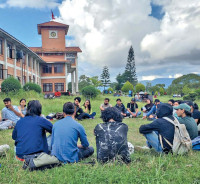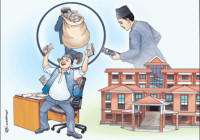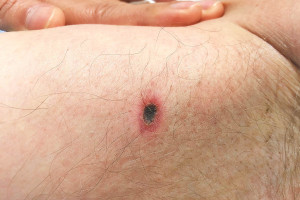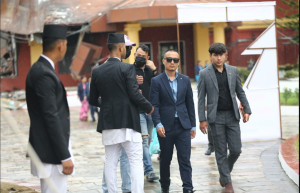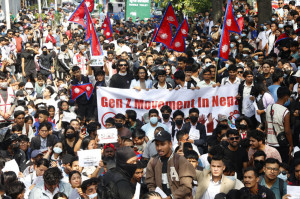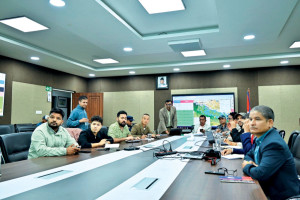Columns
Assessing fire-damaged buildings
Never assume a fire-damaged building is safe just because it looks stable.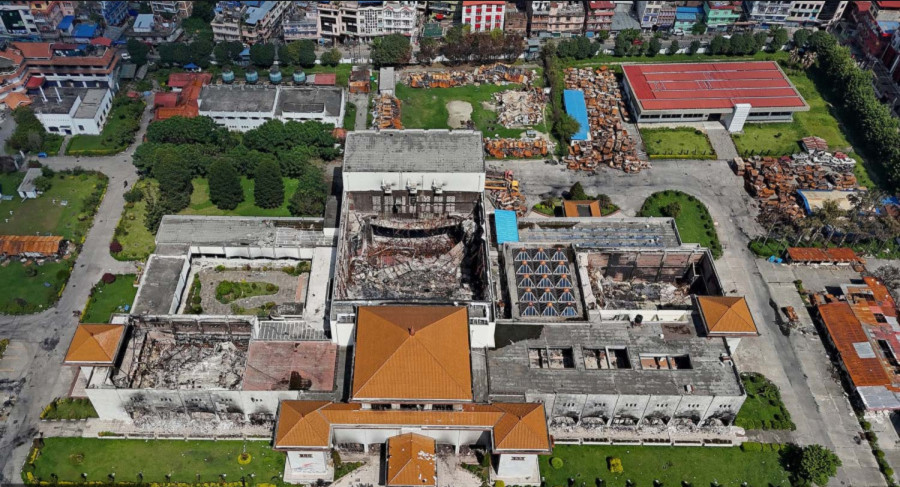
Janak Bhatta & Subhekshya Shrestha
When the Gen Z protest turned violent, the streets of Kathmandu were filled with smoke coming from burned buildings and torched vehicles. The nation silently watched in disbelief as what started as a peaceful demonstration turned into chaos, with the skyline flickering with smoke.
Yet, something different began to stir. Many, who initially marched in fury, turned their energy to rebuilding. They joined hands to clean charred streets and rebuild gutted buildings. Volunteers, wearing gloves and carrying broomsticks, swept debris, cleared rubble and repainted walls blackened by smoke. Their self-driven effort showed that Gen Z are not just the voice of dissent but a symbol of responsibility and accountability.
Their efforts drew attention from structural engineers, who appreciated their spirit yet warned that rebuilding does not start with clearing rubble, but understanding what fire does beneath the surface. A structure may still stand, but the strength of its concrete and steel could be compromised.
A professional assessment is necessary before people move back in. True recovery goes beyond clearing debris. It depends on ensuring structures are safe to sustain community life again.
What happens during a fire?
Many buildings in Nepal are made of concrete, and their natural greyish colour often misleads people into believing the aftermath of a fire is minor. After the flames are gone, they only notice the blackened walls. But the real danger lies within.
A building fire evolves in stages. It begins in the incipient stage, with slow, flameless combustion. In the growth stage, flames spread quickly, influenced by ventilation and combustible interiors that line the room. When a fire reaches the flashover stage, the entire room erupts in flames exceeding 800-1,000 degrees Celsius. Every structural element becomes part of thermal stress: concrete spalls, and steel quickly loses strength and stiffness. The cooling phase or post-flashover stage is more destructive; a sudden drop in temperature hits superheated materials, when they contract abruptly, worsening damage.
The smoke produces toxic gases, steam and soot particles that are extremely fine and abrasive and carry carcinogenic compounds. Volunteers cleaning fire-damaged sites may unknowingly expose themselves to carcinogenic air if they do not use protective masks, gloves and safety equipment.
Fire changes the chemistry of building materials. Concrete loses hydration, becomes brittle, and its load capacity may be drastically reduced even if not visible.
How construction materials react to fire
Different materials behave differently to fire and strength cannot be judged by appearance alone. The ISO 834 curve shows that within only half an hour, temperatures can exceed 800 degrees Celsius and climb past 1,000 degrees Celsius. Concrete under this exposure can lose up to half of its compressive strength.
There are a few simple things even non-engineers can notice. Normal concrete turns pink or reddish around 300–600 degrees Celsius, whitish-grey at 600–900 degrees Celsius, and finally buff or yellowish. Concrete spalling, when outer layers crack or peel, also exposes the steel reinforcement to fire, accelerating failure.
For steel structures, strength remains intact up to 600 degrees Celsius but drops sharply beyond 800 degrees Celsius. Yield strength drops by nearly 30 percent and its ductility, the ability to bend without breaking, reduces sharply. This is why post-fire steel beams appear warped, twisted, or sagging.
Masonry, though heat-resistant, loses elasticity above 400 degrees Celsius, while soot and oxidation cause permanent discolouration even at 250 degrees Celsius.
The dangers are not only from direct burning. Thermal expansion, sudden cooling from firefighting water, or repeated heating and cooling cycles weaken materials. Once concrete temperatures exceed 500 degrees Celsius, its capacity decreases significantly. Steel suffers both mechanical (loss of strength and stiffness) and geometrical damage (buckling and residual drifts).
After a fire, superficial fixes like quick cleaning, repainting walls, or replacing broken glass don’t restore safety. Such cosmetic repairs mask danger. Without a detailed safety check, occupants are walking back into a trap.
Safety before re-occupancy
For ordinary buildings, a self-check is handy. Look for discolored or spalled concrete, reinforcement bars exposed, cracked or peeling finishes, or distorted beams or columns. These are warning signs that should not be ignored.
Structural engineers conduct Non-Destructive Tests (NDTs) for detailed inspection. A Rebound Hammer Test estimates concrete strength and the Ultrasonic Pulse Velocity Test (UPV) traces internal cracks or voids. Engineers extract samples for lab tests.
The message is simple: Never assume a fire-damaged building is safe because it looks stable. A detailed engineering assessment can decide whether a building is safe, needs repair, or should be abandoned. Public awareness and expert inspection prevent future tragedies.
Fire protection ratings
The recent disaster reminds us of a crucial truth: Our buildings need proper fire ratings, not just earthquake resistance.
Fires may start in many ways: short circuits, gas explosions, or chemical reactions. Each behaves differently. Studies have classified them as Class A (wood, trash, textiles), Class B (flammable liquids like gasoline, diesel, or alcohol), Class C (electrical equipment and wiring), Class D (metals), and Class K (cooking oils and fats). Each produces distinct heat and destruction. Short-circuit fires in office buildings do not match kitchen fires in residences, nor do combustible fires compare to burning books in a library.
Fire rating measures how long a building element, like a wall, beam, or column, can resist fire before failure. A 2-hour rated beam can withstand a standard fire for that duration. Codes such as IS 1642:1989 provide such guidelines. In Nepal, municipalities and the DUDBC rarely enforce them. Our focus remains on earthquake zoning, while fire safety is neglected.
Every new building should display a fire resistance label. For example, “fire-resistant for 2 hours”, just as we say “earthquake-resistant.” Hospitals, schools and public buildings especially must make this compulsory. Existing structures, too, should undergo fire-rating inspections before reoccupation.
The youth-led movement that sparked this revolution also showed that safety demands cannot wait. Repainting or glass replacement does not restore structural strength. Mandatory fire ratings, strict inspections and public awareness are the fundamental safeguards.
Conclusion
Before entering fire-damaged buildings, strict precautions are essential. Burnt structures release asbestos from glass façades, lead residues and toxic chemicals. Water used during firefighting can trigger mold growth. Protective gear like gloves, masks, eye protection and respirators must be mandatory. Volunteers and engineers should never enter without expert guidance and safety planning.
This tragedy must mark a turning point. Nepal cannot build only for bye-laws, earthquakes, or serviceability; we must also build for fire safety. Lives depend on it.




 16.12°C Kathmandu
16.12°C Kathmandu


